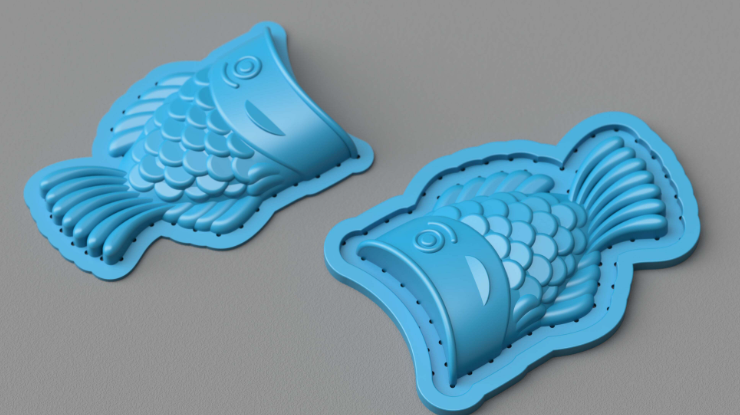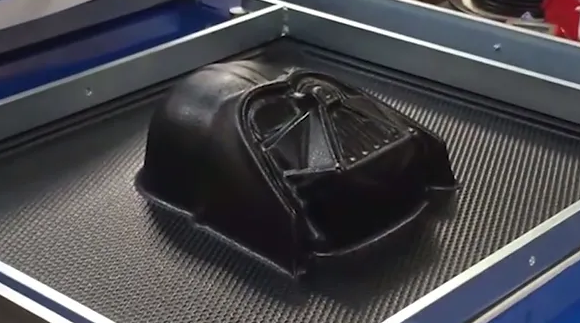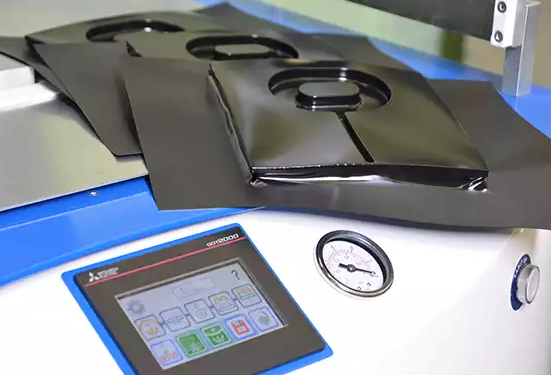UHMW can be vacuum formed, but it requires specialized equipment and precise temperature control.
Understanding UHMW: Properties and Applications
Overview of UHMW Polyethylene
Ultra-High Molecular Weight Polyethylene (UHMW) is a subset of thermoplastic polyethylene. This substantial molecular weight contributes to UHMW’s exceptional toughness and durability.

Key Properties of UHMW:
- High Impact Strength: UHMW has an extraordinary ability to absorb energy and resist impact, making it highly durable.
- Low Friction Coefficient: The material exhibits a low coefficient of friction, comparable to that of PTFE, often referred to as Teflon.
- Chemical Resistance: UHMW is highly resistant to most corrosive chemicals, including acids and alkalis.
- Abrasion Resistance: It has superior abrasion resistance, often outperforming steel in this regard.
- Temperature Range: UHMW maintains its properties across a broad temperature range, typically from -260°C to +80°C.
- Weight: Despite its strength, UHMW is relatively lightweight, with a density of 0.93 to 0.94 g/cm³.
Common Uses of UHMW in Industry:
- Material Handling: UHMW is widely used in conveyor systems for its low friction and wear resistance.
- Marine Applications: Its resistance to water absorption and corrosion makes it ideal for marine dock fenders and ship components.
- Food Industry: The FDA compliant grades of UHMW are used in food processing equipment due to their non-toxic and easy-to-clean nature.
- Mining and Heavy Equipment: UHMW is employed in lining dump trucks and chutes due to its high abrasion resistance.
Economic Aspects:
- Cost-Effectiveness: Although the initial cost of UHMW can be higher than some other plastics, its longevity and durability often result in lower long-term costs.
- Maintenance: Due to its high wear and impact resistance, UHMW requires minimal maintenance, further reducing lifetime costs.
Advantages and Disadvantages:
- Advantages: UHMW’s high impact strength, abrasion resistance, and chemical stability make it a versatile material suitable for a wide range of applications.
- Disadvantages: However, its relatively low melting point (around 130°C to 137°C) limits its use in high-temperature applications.
Exploring the Feasibility of Vacuum Forming UHMW
Challenges in Vacuum Forming UHMW
Ultra-High Molecular Weight Polyethylene (UHMW) poses unique challenges in vacuum forming due to its specific properties.
- High Processing Temperature: UHMW requires a processing temperature around 130°C to 137°C, which can be challenging to maintain uniformly in vacuum forming.
- Material Rigidity: The high molecular weight of UHMW leads to increased rigidity, making it difficult to achieve desired shapes without defects.
- Shrinkage and Warping: Post-processing, UHMW tends to shrink or warp, which can affect the dimensional accuracy of the final product.
Cost Implications: These challenges often translate into increased production costs due to higher energy requirements and potential waste from failed attempts.
Case Studies: Attempts at Vacuum Forming UHMW
Several case studies demonstrate the varied success rates in vacuum forming UHMW.
- Industrial Components: In one case, a manufacturer attempted to form UHMW into complex industrial parts. The success rate was around 60-70%, with the rest encountering issues like uneven thickness and warping.
- Packaging Materials: Another study focused on creating packaging materials from UHMW. Although they achieved a higher success rate, the costs were 30% higher than using more easily formed materials.
Expert Opinions on UHMW and Vacuum Forming
Experts in the field of materials science and manufacturing offer diverse perspectives on UHMW vacuum forming.
- Feasibility: Most agree that while it is technically possible to vacuum form UHMW, the process requires specialized equipment and expertise.
- Cost-Benefit Analysis: Experts highlight the need for a thorough cost-benefit analysis, as the high costs of vacuum forming UHMW may not always justify the end product’s benefits.

Technical Aspects of Vacuum Forming UHMW
Vacuum forming UHMW (Ultra-High Molecular Weight Polyethylene) involves several critical technical aspects that ensure the success and efficiency of the process.
Temperature and Pressure Considerations
- Optimal Temperature Range: For effective vacuum forming, UHMW requires a precise temperature range, typically between 130°C to 137°C. This range is crucial to soften the material enough for molding without causing degradation.
- Uniform Heating: Achieving uniform heating across the UHMW sheet is essential to prevent uneven thickness and warping in the final product.
- Pressure Application: Applying the right amount of vacuum pressure is critical. Too little pressure results in inadequate molding, while too much pressure can cause the material to thin out excessively or tear.
Equipment and Tooling Requirements
- Specialized Heating Systems: Due to UHMW’s high molecular weight, standard vacuum forming heaters might not suffice. Specialized heaters that can provide uniform and consistent heat are necessary.
- Durable Molds: Molds need to withstand the high temperatures and pressures of the UHMW forming process.
- Precision Tools: Precision cutting and finishing tools are required post-forming to achieve the desired dimensions and tolerances.
Quality and Precision in UHMW Forming
- Dimensional Accuracy: Maintaining dimensional accuracy is a major challenge due to UHMW’s tendency to warp and shrink. Advanced measuring and calibration tools are essential.
- Surface Finish: Achieving a high-quality surface finish requires careful control of temperature and pressure during the forming process.
- Repeatability: Consistency in replicating shapes and sizes in mass production is a challenge due to the material’s properties. Continuous monitoring and adjustment of process parameters are necessary to ensure repeatability.
Alternative Methods for Shaping UHMW
Comparison with Other Plastic Forming Techniques
Here’s a detailed comparison presented in a table format:
| Technique | UHMW Vacuum Forming | Injection Molding | CNC Machining | Extrusion |
|---|---|---|---|---|
| Efficiency | Moderate, challenges due to high molecular weight | High, suitable for mass production | High, precise and customizable | High, continuous production possible |
| Cost | High due to specialized equipment and process challenges | Moderate, economies of scale applicable | High, labor and machine intensive | Moderate, depending on the complexity |
| Material Suitability | Limited, due to temperature and pressure constraints | Good, widely used for various plastics | Excellent, versatile for different materials | Good, but limited to uniform cross-sections |
| Dimensional Accuracy | Moderate, prone to warping and shrinkage | High, precise molds used | Excellent, controlled by digital designs | Moderate, depends on die precision |
| Surface Finish | Good, can be controlled with process parameters | Excellent, mold defines finish | Excellent, controlled by tool precision | Good, depends on die quality |
| Tooling and Equipment | Specialized vacuum forming machines required | Standard injection molding machines | Advanced CNC machines | Standard extrusion equipment |
| Speed of Production | Slow, due to complex setup and cooling times | Fast, suitable for high volume | Variable, based on complexity | Fast, continuous process |
Innovations in UHMW Processing
- Advanced Molding Techniques: Development of new molding techniques that can better handle the high molecular weight of UHMW.
- Material Blends: Experimentation with blends of UHMW and other polymers to improve processability and final product properties.
- Precision Tooling: The introduction of more precise and durable tooling to improve the accuracy and quality of UHMW products.
Future Trends in UHMW Fabrication
- Sustainability Focus: Increased emphasis on eco-friendly processing methods and recycling of UHMW materials.
- Automation and AI: Leveraging automation and artificial intelligence to optimize the UHMW shaping processes for efficiency and quality.
- Customization and 3D Printing: Exploration of 3D printing technologies for creating customized UHMW parts.

Practical Applications and Case Studies
Real-World Examples of UHMW Products
Ultra-High Molecular Weight Polyethylene (UHMW) finds numerous applications in various industries due to its exceptional properties. Some notable examples include:
- Marine Sector: UHMW is extensively used for making dock fenders and boat hulls due to its high impact resistance and low moisture absorption.
- Material Handling: Conveyor belts and chute linings often use UHMW to reduce wear and tear and to minimize friction.
- Medical Devices: Orthopedic implants like hip and knee replacements utilize UHMW for its biocompatibility and wear resistance.
- Food Processing: UHMW is used in machinery parts that require FDA compliance due to its non-toxic nature.
Success Stories in UHMW Manufacturing
Several success stories highlight UHMW’s versatility and effectiveness:
- Aerospace Application: A leading aerospace company utilized UHMW components for its lightweight and high-strength properties, resulting in significant weight reduction in their designs.
- Mining Equipment Upgrade: A mining company replaced traditional metal parts with UHMW components, leading to a 40% decrease in equipment maintenance costs.
Industry Feedback and User Experiences
Feedback from various industries has generally been positive regarding UHMW’s performance:
- Durability: Many manufacturers praise UHMW for its exceptional lifespan, often outlasting other materials in harsh conditions.
- Cost-Effectiveness: While the initial cost can be higher, the long-term savings due to reduced maintenance and replacement needs are frequently noted.
- Processing Challenges: Some industries note challenges in processing UHMW, particularly in shaping and machining due to its high molecular weight.




